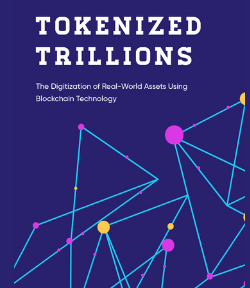
Why Institutions Are Betting Big on Bitcoin
Is This Bitcoin’s Most Important Market Cycle Yet?
The cryptocurrency market is no longer an experiment on the financial fringe. With Bitcoin breaking into the portfolios of public companies, institutional investors, and potentially even sovereign governments, the asset class is undergoing a seismic shift. No longer just a speculative vehicle, Bitcoin is becoming a strategic reserve and portfolio cornerstone.
A perfect storm is forming: institutional capital inflows, structural supply limitations, global macroeconomic tailwinds, and long-overdue regulatory clarity in the U.S. These ingredients are building toward what many believe could be the longest and most transformative bull run in Bitcoin’s history.
From Speculation to Structural Allocation
Until recently, Bitcoin’s price cycles were primarily driven by retail euphoria, narratives, and meme momentum. Today, the story is different.

-
Bitcoin ETFs, approved in January 2024, have changed the game. Billions in assets under management now flow through regulated, low-fee exchange-traded products. These ETFs are absorbing newly mined Bitcoin at a rate 5–10x faster than the network can produce.
-
Corporate treasuries are reallocating to Bitcoin to preserve long-term purchasing power, with firms like MicroStrategy, Tesla, and GameStop leading the charge. The narrative has shifted from opportunistic buying to long-term strategic accumulation.
-
Sovereign interest is quietly building. Nations exploring Bitcoin for reserve diversification and settlement rails indicate that state-level adoption may not be far behind.

According to PlanB’s stock-to-flow model and onchain analytics, Bitcoin is not just in another bull cycle – it’s undergoing a regime change.
The $200,000 Thesis: Why This Cycle Is Different
Analysts like Matt Hougan and Raoul Pal foresee Bitcoin reaching $200,000 – possibly even $400,000 – by late 2025. Here’s why those targets are now rooted in fundamentals, not hype:

-
Supply/Demand Imbalance: With only ~165,000 new BTC mined per year and over 1 million BTC demanded annually across ETFs, corporations, and sovereign wallets, Bitcoin faces a critical shortage.
-
Macro Tailwinds: Surging global debt, record U.S. Treasury issuance, inflationary risk, and waning confidence in fiat currencies are creating an ideal environment for hard, non-sovereign assets like Bitcoin.
-
Portfolio Modernization: Traditional 60/40 portfolio models are being re-evaluated. Bitcoin’s non-correlation to stocks and bonds, combined with high risk-adjusted returns, makes it an ideal addition for pension funds and wealth managers. A 1–5% allocation is increasingly viewed as prudent rather than speculative.

As institutional capital rotates into alternative assets and risk-parity portfolios adopt Bitcoin, even a 1% global wealth reallocation could push prices beyond $250,000.
The Genius Act and Beyond
U.S. regulation remains the final puzzle piece.
-
The Genius Act, a bipartisan stablecoin regulatory bill, represents the first serious attempt to legislate crypto at the federal level. Its progress through the Senate marks a watershed moment.
-
Why it matters: Stablecoins like USDT and USDC are now among the top buyers of U.S. Treasuries. Institutional investors, both in the U.S. and abroad, need legal clarity to expand usage.
-
A Secure Future: Just as the Telecommunications Act of 1996 unlocked the internet boom, coherent crypto regulation could solidify the industry’s foundation for exponential growth.
Legal frameworks would not only de-risk crypto for institutions but also enable innovation in areas like DeFi, tokenized assets, and alternative ETPs – further deepening adoption.
Bitcoin as a Strategic Asset
Corporations worldwide are increasingly skeptical of parking reserves in fiat. With U.S. fiscal dominance, QE dependency, and currency debasement on the rise, the demand for a neutral, decentralized, and finite asset like Bitcoin is accelerating.
-
Covered call strategies on volatile assets like GameStop and Coinbase are being adapted for Bitcoin, unlocking yield potential for institutional investors while preserving exposure.
-
Treasury diversification by corporations and possibly sovereigns signals a paradigm shift where Bitcoin becomes a parallel strategic reserve – not just a tech asset, but monetary insurance.
A Maturing Market

Today’s $3 trillion crypto market has the structural potential to 10x in value. Here’s why:
-
Bitcoin is no longer isolated—it is embedded in ETFs, macro portfolios, and digital payment rails.
-
The cost to hold and custody Bitcoin has collapsed, and security has improved drastically thanks to custodians like Fidelity, Coinbase Custody, and others.
-
Public sentiment is shifting, with investors rewarding companies adding BTC to balance sheets.
If Bitcoin’s trajectory mirrors the adoption curve of the internet or gold, a $30 trillion total market cap for crypto is not speculative – it’s probable.
The Bitcoin Supercycle?
This is not a repeat of 2017 or 2021. The next chapter in crypto is being written not by speculators, but by pensions, sovereigns, corporations, and policymakers. The convergence of supply shock, institutional demand, macro fear, and legal clarity has created a rare inflection point.
Bitcoin is no longer a hedge – it’s a core allocation.
If U.S. regulation solidifies, sovereigns begin allocating, and ETFs continue to dominate inflows, the road to $200K and beyond may not just be a possibility – it may be inevitable.






